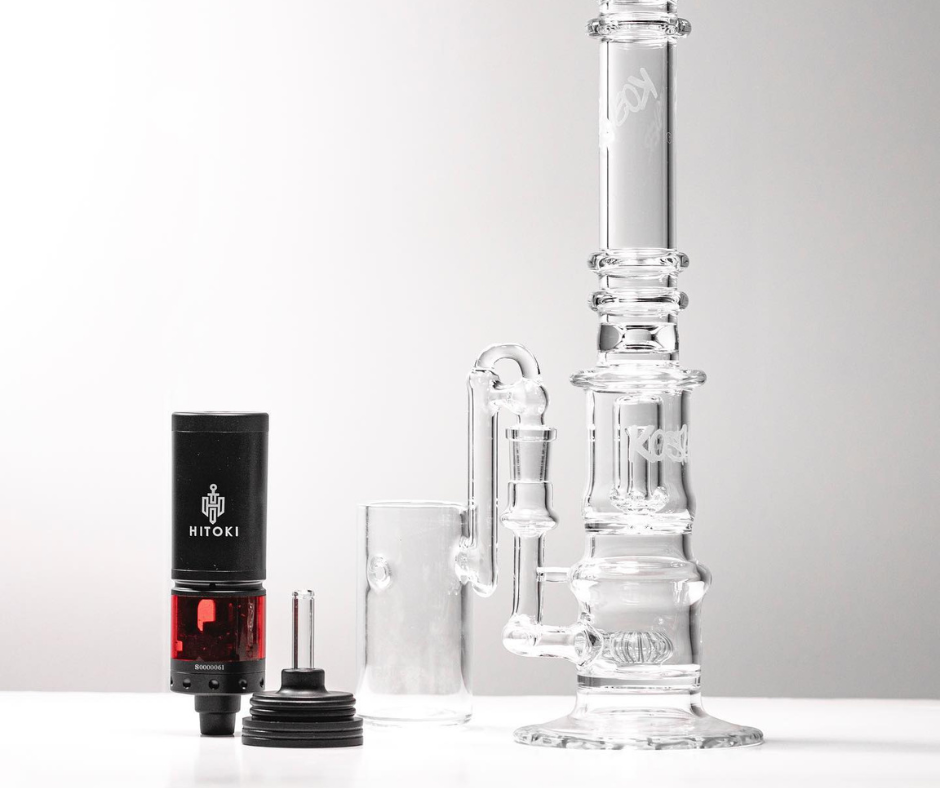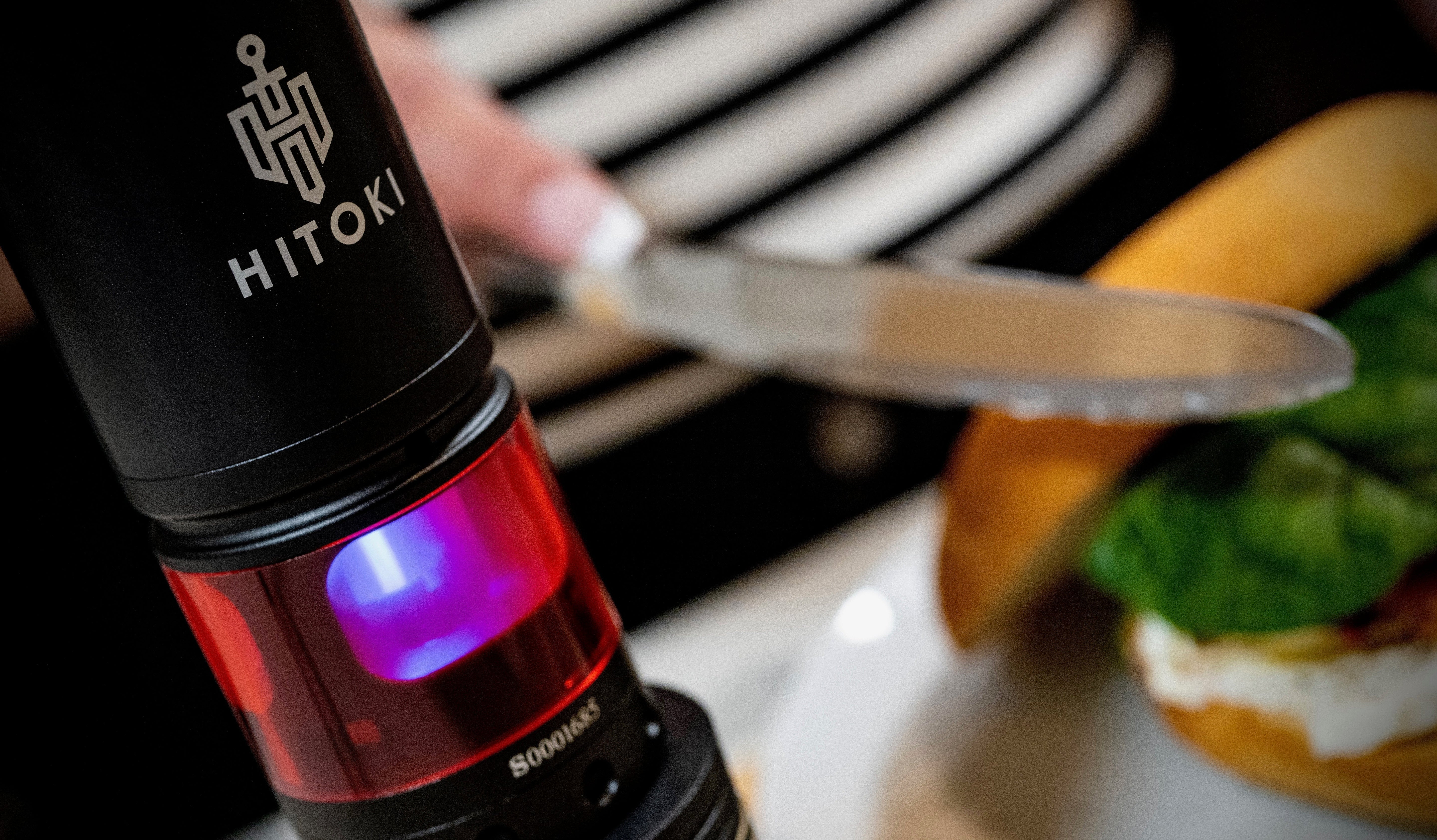Discover the intriguing history of the term "bong," its origins, evolution, and impact on the realm of smoking devices, culminating in the sophisticated technology of the Hitoki Trident.

To truly appreciate the cutting-edge innovation and design that the Hitoki Trident laser bong offers, it's essential to delve into the captivating history of the term "bong" itself. This simple word, spanning diverse cultures and time periods, has come to represent a vital aspect of the smoking landscape and the evolution of the smoking experience. As we journey through the centuries to explore the origins of the word "bong" and its growth in popularity and usage, we'll uncover the remarkable cultural connections and innovations that now culminate in the unparalleled performance of the Hitoki Trident.
The word "bong" provides a fascinating insight into the ancient smoking rituals and inventive methods used by various civilizations in their pursuit of the most gratifying smoking experiences. Traveling back thousands of years, the first instances of water pipes can be traced to the nomadic tribes in Central Asia and the African tribes of the Cameroon. The term "bong" itself is believed to have originated from the Thai word "บ้อง" (Baung), referring to traditional Thai bamboo water pipes. Over time, the word would make its way to the Western world, where it would encounter new interpretations and applications that would ultimately give birth to the bongs and smoking devices known today, including the technologically advanced Hitoki Trident.
In this article, we will explore the long and fascinating history of the term "bong," its roots in various ancient civilizations, the adaptation and modernization of water pipes, and finally the culmination of this rich history in the sophisticated design and functionality of the Hitoki Trident. By diving into the past and uncovering the story behind the evolution of the bong, we can gain a deeper understanding and appreciation of the distinct role the Hitoki Trident plays in the continuing innovation of smoking devices, seamlessly blending the best of timeless tradition with revolutionary technology.
Ancient Roots and Rituals Involving Water Pipes
The origins of water pipes used for smoking can be found across multiple ancient cultures, each contributing to the development and evolution of the bong as we know it today. Here are some notable examples from various civilizations:
- Central Asia: Archaeologists have discovered ancient water pipes in what is now Russia and China, dating back to around 1100-1400 CE. These pipes often featured ornate gold and intricate craftsmanship, signifying their importance in ceremonial and religious rituals.
- Africa: African tribes in the Cameroon region utilized water pipes made from materials such as gourds or hollowed-out horns, reflecting their resourcefulness and the broader cultural use of bongs across different continents.
These early instances demonstrate that the concept of using water as a means of filtration in the smoking process has been present across diverse cultures and time periods.
The Thai Connection: Origins of the Term "Bong"
The term "bong" is believed to have originated from the Thai word "บ้อง" (Baung), which referred to a traditional bamboo water pipe used for smoking. These bamboo bongs were widely popular in Thailand, consisting of a simple bamboo cylinder filled with water and a smaller pipe attached as a mouthpiece. The concept of the Thai bamboo bongs would eventually be introduced to the Western world through trade, exploration, and the advent of globalization.
Western Adaptation and Modernization of the Bong
The bong's journey from traditional bamboo cylinders to the sophisticated devices we see today saw a series of adaptations and changes, particularly in the Western world:
- Introduction to the West: The bong made its way to the Western world through various means such as trade and travel during the 18th and early 19th centuries. One key example is the arrival of the bong in England with the East India Trading Company, which led to its increasing popularity among the English aristocracy.
- Material Innovations: As the bong gained popularity, new materials were introduced to replace its bamboo roots, such as glass, acrylic, and silicone, which shaped its development and paved the way for the modern bongs we see today.
- Changes in Design and Function: Beginning in the 1960s, creative minds continued to refine the design and function of the bong, seeking to improve filtration and provide various features that catered to the preferences of the growing population of smoking enthusiasts.
This continuous adaptation and innovation transformed the bong into more than just a tool for smoking, but an emblem of modern counter-culture and a symbol of refined smoking experiences.
The Apex of Bong Innovation: The Hitoki Trident Laser Bong

The Hitoki Trident stands as a testament to the rich history and innovation that has led to the development of modern bongs. Its state-of-the-art design and functionality embody the spirit of progression that has been driving the evolution of the bong since its inception. Key features of the Hitoki Trident that showcase the peak of bong innovation include:
- Laser Ignition System: The Trident employs an innovative laser technology that provides precision heating, enhancing terpene flavors and aromas with an unmatched experience.
- Swappable Ceramic Bowls: The device offers swappable ceramic bowls that allow for quick changes between strains and materials, providing a pristine and unadulterated smoking experience.
- Integrated Water Filtration: Preserving the time-honored tradition of water filtration, the Hitoki Trident incorporates an integrated water filter designed to ensure the smoothest and most satisfying hits possible.
- High-Powered Battery: The Trident's powerful battery boasts an impressive capacity for 280 hits per charge, ensuring a reliable and long-lasting smoking experience.
Conclusion
The history of the term "bong" and its transformation into the contemporary smoking devices we know today represents a fascinating journey through tradition, cultural exchange, and relentless innovation. From its ancient roots in Central Asia and Africa, to the Thai origins of the term itself and the adaptation and modernization of the bong in the Western world, it is evident that the pursuit of the ultimate smoking experience has been a driving force throughout history.
Are you tired of traditional smoking methods? Experience the future of smoking with Hitoki's laser bong! Say goodbye to the hassle of lighters and enjoy instant ignition with our high-powered laser technology. Upgrade your smoking experience and order your Hitoki laser bong today!






Share:
How the Hitoki Trident Sets the Bar for Eco-Friendly Premium Cannabis Bongs
Elevate Your Meditation and Mindfulness Practice with the Hitoki Trident: Enhancing Inner Peace and Self-Reflection